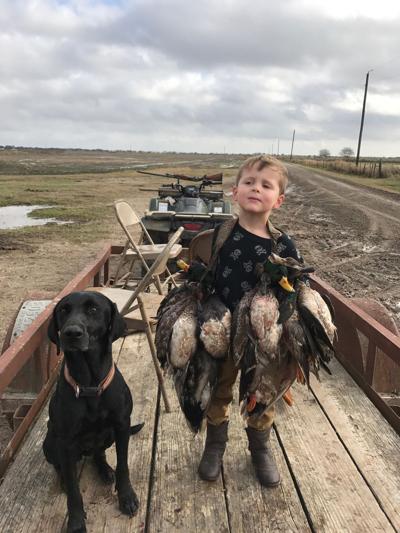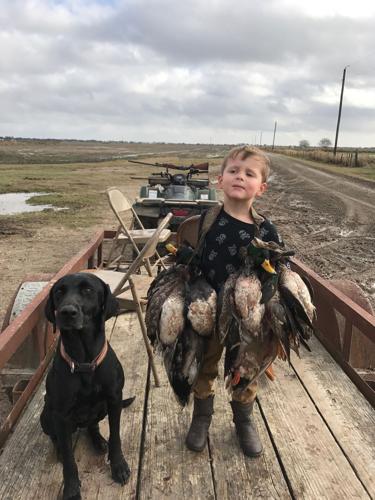Amidst warnings about fish kills coming from several locations in the marshes and near-coastal waters, it’s likely you’ll need to sit with a fortune teller to come up the best weekend fishing spot.
After this week’s cold rain (yes, there’s more coming) heralds another not-as-frigid-as-the-last-one, but-a-still-cold cold front, the forecast leads us into a welcomed stretch of sunshiny days. After lengthy stretches of gloom, we need the sun.
Aside: And that begs the question. How do our Yankee brethren cope with those seemingly unending days of cold, clouds and snow? Or maybe they don’t, and that’s why they are the way they are. (Just kidding. Please don’t fill my email, please.)
One thing’s for sure, the fish are in the deep holes and won’t come out until the water warms from mid-40s surface temperatures reported from most Delacroix waters west to Dulac and Cocodrie.
Recent history reveals some spots, but only if you’re willing to go deep and crawl soft-plastic minnow imitations along the bottom. Live minnows work, too, but they’re hard to come by after freezing conditions.
Places like the Intracoastal Waterway, deeper pipeline canals and deep bends in bayous will hold trout and redfish, and if you can find shell banks, rip-rap, pipes, bulkheads and bridges in these areas — anything to direct the sun’s heat into the water — you stand a better chance to catch fish.
It’s not that other deep-water places aren’t holding fish. They are, it’s that a place 4-5 degrees warmer water can make all the difference in the way a trout or redfish will take an offering.
Another tip is to fish with light line on a very sensitive rod, a small jighead (maybe even going to an eighth-ounce jig) because the bite is going to be soft and you’re going to need all the help to detect a bite.
Don’t get stuck
Another warning comes from the charter skippers. North winds and winter always bring lower tidal movement. So, there’s not a lot of water in the marshes, even on this week’s east winds. With the cold front coming, there’s a string of blow-water-from-the-marshes north winds coming this weekend.
That written, be careful where you run this weekend. Fishermen are not running the Go-Devils and other surface drive boats, and most boats can’t run in 2-4 inches of water.
And just because it’s not 22 degrees in the morning, you still can run into lots of trouble on a 32-degree, 10 mph wind if you have to spend a night on a mud flat.
It’s important to have working signal devices in your boat, including high-intensity lights and flares so rescuers can find you at night. A small tarp can be used for cover and to ward off the damp chill.
Float plan
Just as important as lights is to to have a float plan. Let someone at home know where you’re going (the launch and likely fishing locations), the make, length and color of your boat, a description of your towing vehicle and license-plate number, and estimate time of your return home. Leave your cell phone number. It’s also a good idea to carry a device to charge your cell phone from boat batteries.
Dead fish
After stories of fish floating to the surface in canals and roadside ditches in spots along La. 23 and the several inside locations along the Central Coast, Wildlife and Fisheries biologoists and Enforcement Division agents advised folks about fish kills in the aftermath of the coldest coastal conditions in more than five years.
“Typically water temperatures below 40 degrees Fahrenheit for any more than a day begin to cause problems for spotted seatrout, whereas red drum are slightly more tolerant and will begin to experience problems in the mid-30s,” LDWF fisheries biologist Jason Adriance said in the advisory. “The rate at which the water cools is also important. If fish have a chance to acclimate and move, the potential for survival is better.”
The problem with the recent cold is that is came quickly at Christmas, and the strong north winds cold isolated some fish in shallow waters.
Even though it’s been a handful of days since the frigid temperatures blew in, past fish kills under the same conditions showed fish killed by the cold front sink and often do not surface until the water warms, a process possibly taking more than a week to see.
Speckled trout and white trout along with some species of baitfish are most affected. Redfish and drum can also be found among the kill.
Adriance and his fellow biologist ask recreational and commercial fishermen, and any hunters or coastal workers to report what the staff said “are significant numbers of dead or dying fish,” and ask to report the location, directions to the site, species and status of those fish (dead, dying, already decomposed) to the LDWF website: wlf.louisiana.gov/fish-kills. They also ask for a name and telephone contact number.
The Enforcement Division folks also warned about taking fish from a fish-kill site, that size and creek limits apply and will be enforced.


